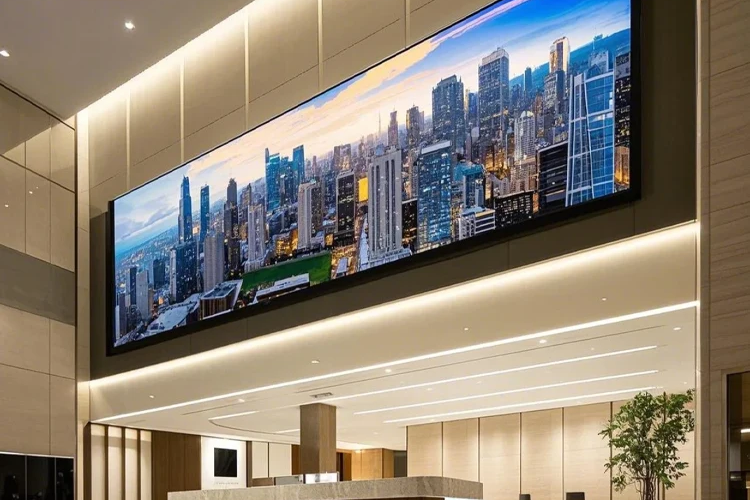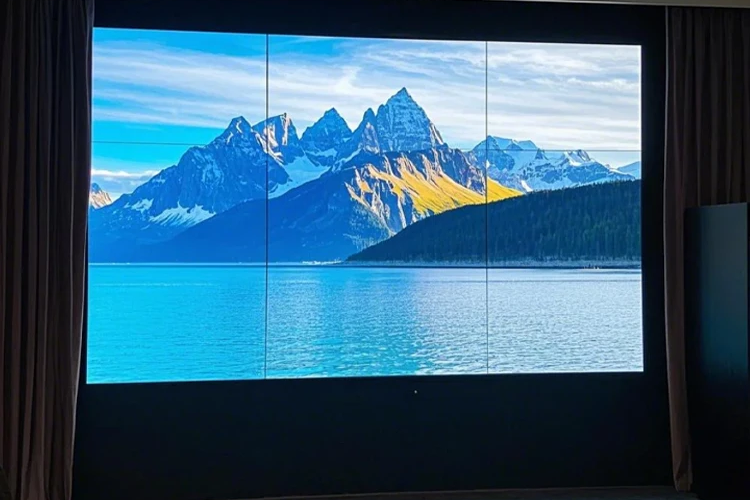When purchasing display devices, whether for indoor, cinema, stage background or outdoor use, we need to consider various factors. Common display devices include: LED display, LCD display, OLED display. So the main differences between LED display and LCD display are:
Display Technology
LED displays are composed of self-luminous light-emitting diodes (LEDs). LCDs, on the other hand, display images through the refraction of light through liquid crystals. This makes LED displays more vivid and rich, with high color saturation, while LCD displays tend to be more natural.
Power consumption and lifespan
The power consumption ratio of LED screens to LCD screens is approximately 1:10. LED screens can illuminate only certain pixels, resulting in lower power consumption. On the other hand, LCD screen can only fully on or fully off their entire backlight layer, consuming more power. Therefore, LED displays are superior in terms of power consumption and energy savings. Furthermore, LED displays typically have a lifespan of up to 100,000 hours, while LCD screens only have a lifespan of around 50,000 hours, making them generally shorter.
Brightness and Viewing Angle
LED displays typically offer higher brightness and wider viewing angles, making them suitable for outdoor and large-scale displays. Regardless of whether they are rented or installed, outdoor displays typically have a brightness exceeding 5500 nits and offer a wide 160-degree viewing angle. In contrast, LCD displays offer moderate brightness and relatively limited viewing angles, making them suitable for indoor and small- to medium-sized displays. Furthermore, even slightly off-angle viewing angles can cause the original color to become blurred, limiting their outdoor use.


Refresh rate
Rental LED displays currently have refresh rates as high as 7680Hz, while indoor and outdoor fixed and COB displays reach ≥3840Hz. These offer superior video quality and streak-free camera footage. LCD screen refresh rates are determined by the panel’s physical properties and the driver circuitry. Common options include 60Hz, 144Hz, 240Hz, and 360Hz. These rates primarily serve the human eye, improving the smoothness of dynamic images and reducing artifacts.
Thickness
LED screens are generally lighter and thinner, and their modular design supports seamless splicing, allowing for the creation of creative screens in curved and cylindrical shapes. LCD screens, on the other hand, are thicker, consisting of a backlight layer and a liquid crystal layer. LCD screens are generally fixed in size, making them less suitable for flexible activities.
Resolution
LED display resolution is measured by pixel pitch (P value, such as P3.91, the pixel center distance is 3.91mm). There is no fixed resolution. The resolution of an LED display is divided by module size and dot pitch. Taking the Ningshine SE series cabinet size of 640*480mm (2.10*1.57ft) and the dot pitch of P2.5 as an example, the resolution of a single module is 128*64. LCD pixel resolution is measured by the total number of pixels (such as 1920*1080, 3840*2160 (4K)). The pixel pitch must be proportional to the display size and the resolution must be high.
Application scenarios
LED screens can be selected according to the pixel pitch, and the viewing distance is relatively long, so they can be used in various scenes indoors and outdoors. LCD screens are suitable for close viewing and controllable light conditions, and are mainly used indoors.
| Use Cases | Recommended | Reasons |
| Outdoor advertising/stage | LED | High refresh rate, high brightness, resistant to sunlight and stage glare |
| Indoor advertising | LED/LCD | Reasonably choose based on budget |
| Large conference rooms/exhibitions | LED | Support seamless splicing and fine pitch |
| Ordinary office/Film and Television | LCD | High resolution and detailed image quality, meeting daily needs without the need for high refresh rates |
| Churches | LED | Long viewing distance |
| Mid-range gaming | LCD | Cheaper than LED, significantly reduces ghosting, high cost-effectiveness |
| High end esports | LED | High refresh rates and fast response times, surpassing LCDs in dynamic effects. |
LED display vs LCD display?
Select LED display
- Requires high brightness, high refresh rate, and wide viewing angle
- Customizable size for outdoor use
- Long lifespan
Select LCD display
- Budget constraints
- High resolution for indoor display
- Low brightness requirement
In short, there are significant differences in the applications and performance of LED screens and LCD screens, but from a professional perspective and long-term cost-effectiveness, LED screens are more suitable for investment.
